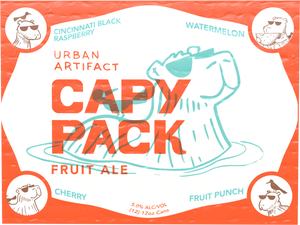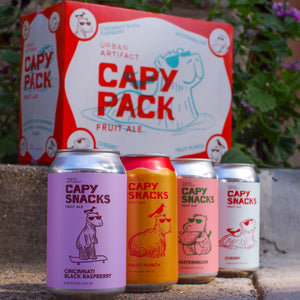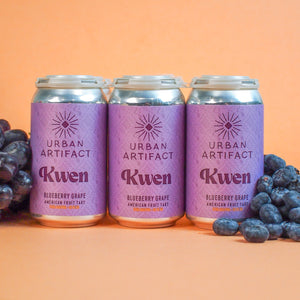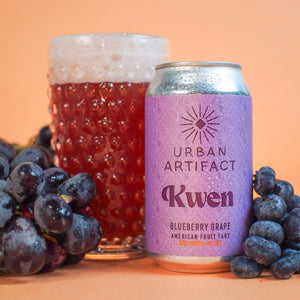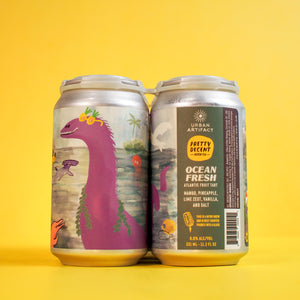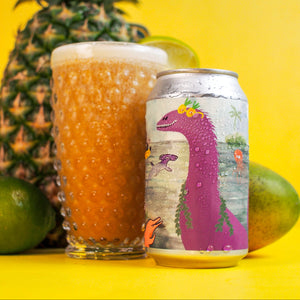We here at Urban Artifact pride ourselves on our process and the wild, tart and sour beers we create. There are but a handful of breweries that focus on sour and wild beers and only one other brewery that dedicates itself to sour mashing the way we do here at Urban Artifact. It is this process of sour mashing and our dedication to our local Northside micro flora that make our flagships and some of our seasonal beers so uniquely tart, sour and refreshing. Our sour mashing process is unique at Urban Artifact, it is not a traditional sour mash but one that I lovingly call the Modified Sour Mash, sounds sexy, right? This process is something that I developed four years ago ever since my first homebrewed sour mash came out less than great. There was something about the sour mash process as most brewers use it that didn’t seem right, didn’t seem to lend itself to consistently high quality results. More often than not, poor sour mashing technique leads to flavors such as cheese, vomit and baby diaper; flavors and aromas that are reminiscent of a bar floor the morning after Thanksgiving Eve. Basically, nothing that anyone who can smell or taste would enjoy imbibing on a more than a one-time joke basis. This Modified Sour Mash (MSM) process is relatively simple, and that is what I would like to share with you today.
A traditional sour mash is a process in which the brewer sours the mash using a high temperature lactobacillus fermentation. This process is often done in the mash tun, with all the grains and wort still in there. Generally a brewer will let the mash cool to about 110°F, throw in some uncrushed barley malt which has all sorts of bacteria living on it, lactobacillus and enteric bacteria included, and let it “spoil” overnight while keeping the mash hot the whole time. This method is archaic at best and inconsistent at worst. There is limited control in the end product with this method and often times the enteric bacteria will take over and produce those not-so-great flavors described above. Batch Ruined. Another common method is to sparge the mash as normal and sour in the brew kettle. This method is called “Kettle Souring” and has the same inconsistency issues as souring in the mash vessel. So what is a brewer to-do? Well, not sour mash like that, assuming you at least respect your beer to some degree.
Below is the Urban Artifact Modified Sour Mash Process in a nutshell.
Step 1. Isolate your souring organism
Rather than leave the souring process up to luck, it is better to take a page from our old friend Louis Pasteur, and isolate the bacteria that is creating the great tasting sour flavors and aromas that go well in a tart and refreshing beer and use that for the souring process. We have been propagating and using the same exact lactobacillus strain, that we call “Sammy”, since September 25, 2014 in the smallest brewhouse vessel we own, the imposing 5 gallon LPV-1. All of our tart and sour beers are born here with Sammy. We will talk in more detail about her and continuous propagation in a later edition of Wild Pitch.
Step 2. Isolate your wort and acidification equipment
A large part of using lactobacillus is overcoming the fear that some brewers have in that they are worried it will infect the entirety of their brewhouse and all their beers. This is simply not true. Using proper sanitation and having dedicated souring equipment helps minimize and eliminate this risk. We use a dedicated souring vessel, Tank D aka Peggy (for the answer to why we call her Peggy, stop by the taproom sometime and ask one of the brewers ) with dedicated brewery hose, clamps, and gaskets. Utilizing dedicated equipment has so far kept Sammy isolated and from getting anywhere else in our brewery, and so long as we continue to practice our sanitary due diligence it shouldn’t be an issue in the future either.
Step 3. Treat Your Bugs Right
This is the most important step in the entire process. Your souring organism of choice will have its own peculiar set of fermentation requirements to create optimal flavors and levels of acidity desired. By manipulating different fermentation variables, we are able to dial in exactly how tart, sour or intense we want our beers to be. Once the ideal level of acidity is achieved it is simply a matter of finishing the beer as normal using the brewer’s yeast of choice, whether that be a wild or domesticated strain.
It is through this process that the majority of our tart flagship and seasonal beers are made. We currently have barrels aging traditionally soured beers as well, that employ month long fermentation times using a bevy of souring bacteria and yeasts, but while you wait for those beers to mature, slake your thirst with what can only be described as the most refreshing style of beers in the world.
Cheers,
Bret Kollmann Baker
Chief of Brewing Operations



